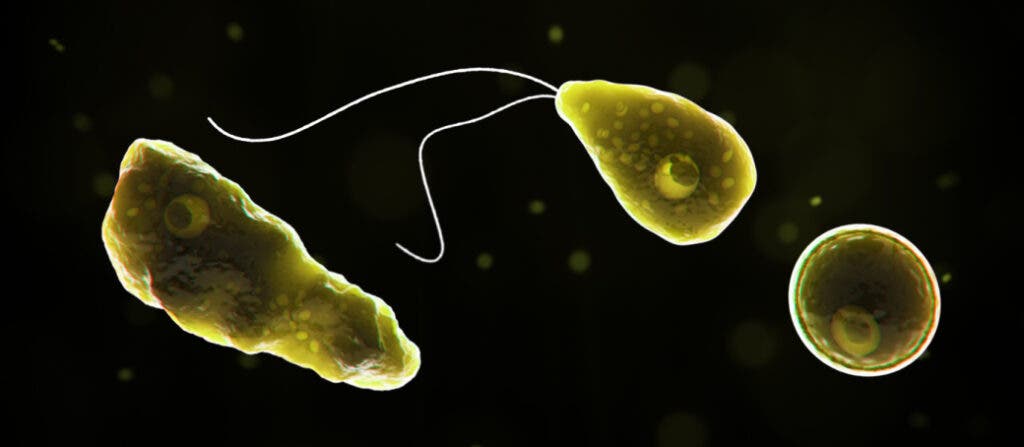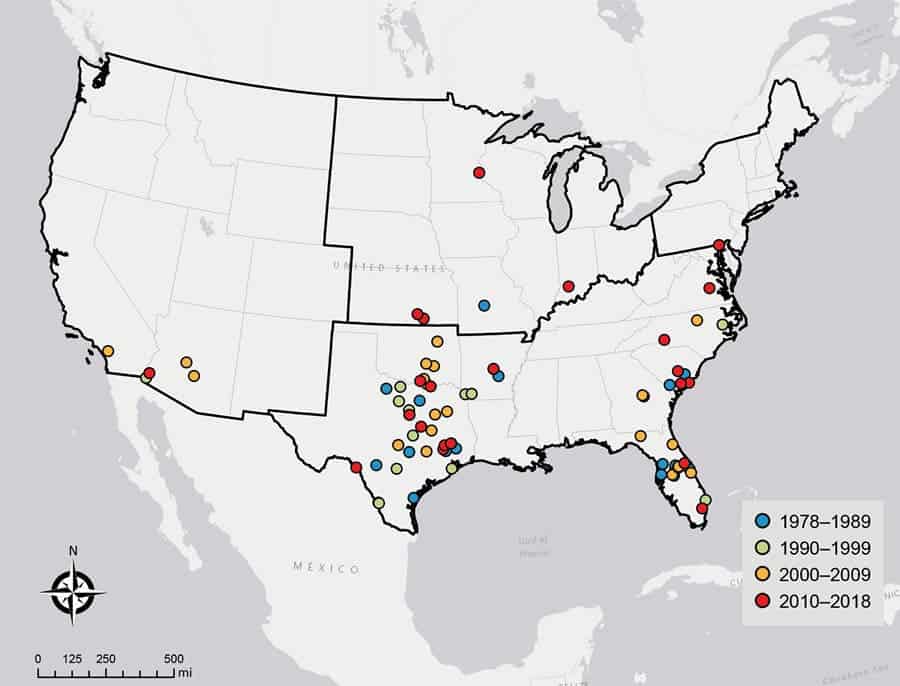
A very rare, but almost invariably fatal infection of the brain caused by Naegleria fowleri, an amoeba found in soils and warm waters, is moving northward in the US. Historically, cases of Naegleria infections have been confined to the southern region of the United States, but a new study that mapped cases occurring in the country in the last four decades found that cases have started to appear farther north in recent years. Warming weather due to climate change may be to blame, scientists say.
Naegleria enters the central nervous system when infected water comes into contact with olfactory nerves through the nose. Once planted inside the olfactory bulbs of the forebrain, the amoeba causes an infection called primary amebic meningoencephalitis (PAM) and feeds on nerve tissue. The infection quickly spreads to other parts of the brain, causing extensive inflammation, necrosis, and hemorrhage.
The symptoms of PAM are indistinguishable from acute bacterial meningitis. The illness begins suddenly with the abrupt onset of fever, headache, nausea, and vomiting. Altered mental status occurs in about two-thirds of patients and is followed by rapid deterioration to coma and death.
About 95% of cases are fatal, but luckily there have been only 85 cases of PAM between 1978 and 2018, according to researchers at the Centers for Disease Control and Prevention (CDC) who linked recreational water exposure (i.e. swimming in lakes or rivers) toinfections with the brain-eating amoeba.
The vast majority of these cases (74) occurred in Texas, Florida, and other southern states. However, six cases were reported in Kansas, Minnesota, and Indiana, five of which occurred since 2010.

Although the sample size is very small, the trend suggests that infections are spreading northward. Generally, Naegleria infections occur when the water is untreated and warm, as this amoeba prefers high temperatures of up to 45°C, Live Science reported.
When the researchers plotted weather data from the date each case was reported, they found that daily temperatures in the 14 days leading up to each case were higher than the historical average. It may be possible that rising temperatures caused more people to swim in untreated waters, thereby contributing to the changing epidemiology of PAM, the CDC researchers wrote in the journal Emerging Infectious Diseases.
“In summary, our results show a suggested northward expansion of PAM and its potential association with higher temperatures warrants further investigation. Characterizing recreational water exposures could improve risk prediction and prevention strategies, helping to prevent cases, aid natural resource custodians, and reduce the burden on state and local health departments,” the authors concluded.


